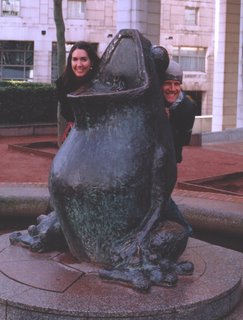The Rest is Noise
I've been meaning to pimp a book that I read over the break, and I've finally gotten around to writing about it. It's a history of 20th century classical music called The Rest is Noise, and it's by Alex Ross, a music writer for the New Yorker. I've always been interested in "modern" classical music, but I didn't know much beyond Shoenberg's twelve tones and John Cage giving concertos of radios tuned to different stations. I read a flattering review of the book on Salon, so I figured I'd read it and learn a little bit more. One of the things I particularly liked about the book was Ross' ability not to just write about the way the music developed throughout the century, but to tie these developments to the social and cultural changes that accompanied them. For example, he has three sequential chapters in the center of the book that describe the way that the twin forces of government funding and censorship impacted the composition and performance of classical music in Stalin's Russia, Nazi Germany, and the US during the New Deal.
All of this would have added up to an interesting and informative book, but what really put it over the edge and made it blog-worthy was the companion website. Each chapter gets its own page with linked video and audio. So while reading about the dissonant sequence during the Rite of Spring that sent Parisian audiences into a frenzy, you can go to the website and listen to a clip of the same section. I thought this was a great example of using multimedia to expand on the printed page, and it really enhanced my reading of the book. I was even inspired to go out and buy a couple CD's of music that I'd read about in the book, and I doubt I would have done that if I hadn't had the music clips to round out my experience.
Labels: music


0 Comments:
Post a Comment
<< Home